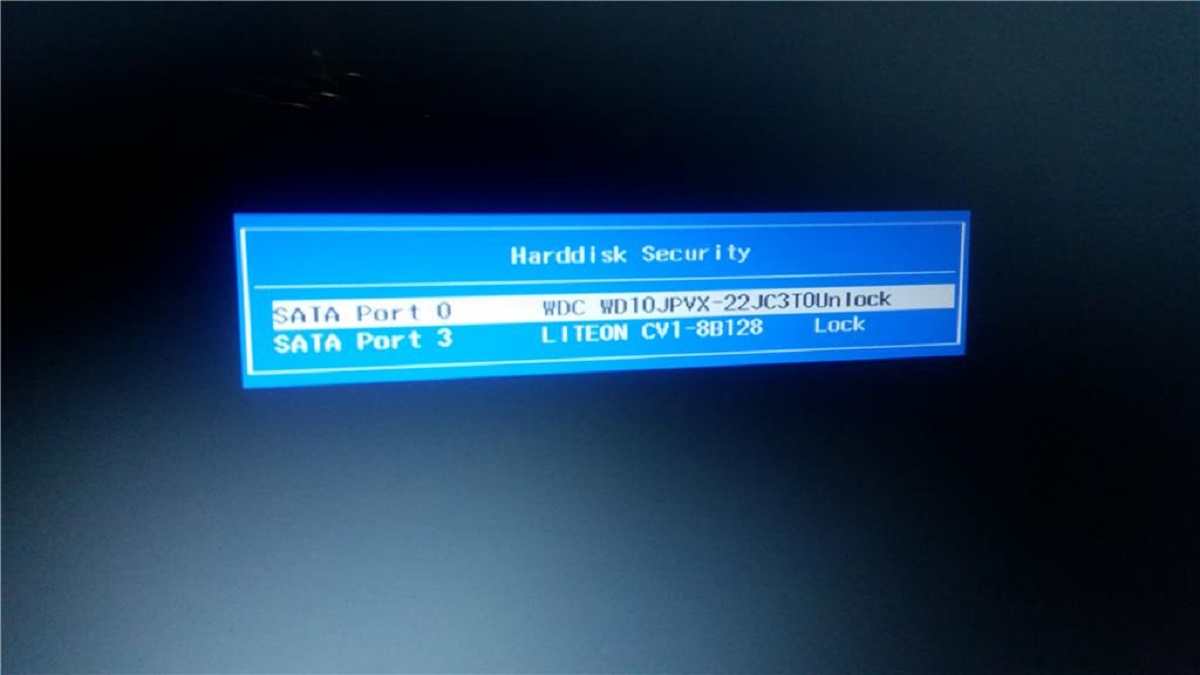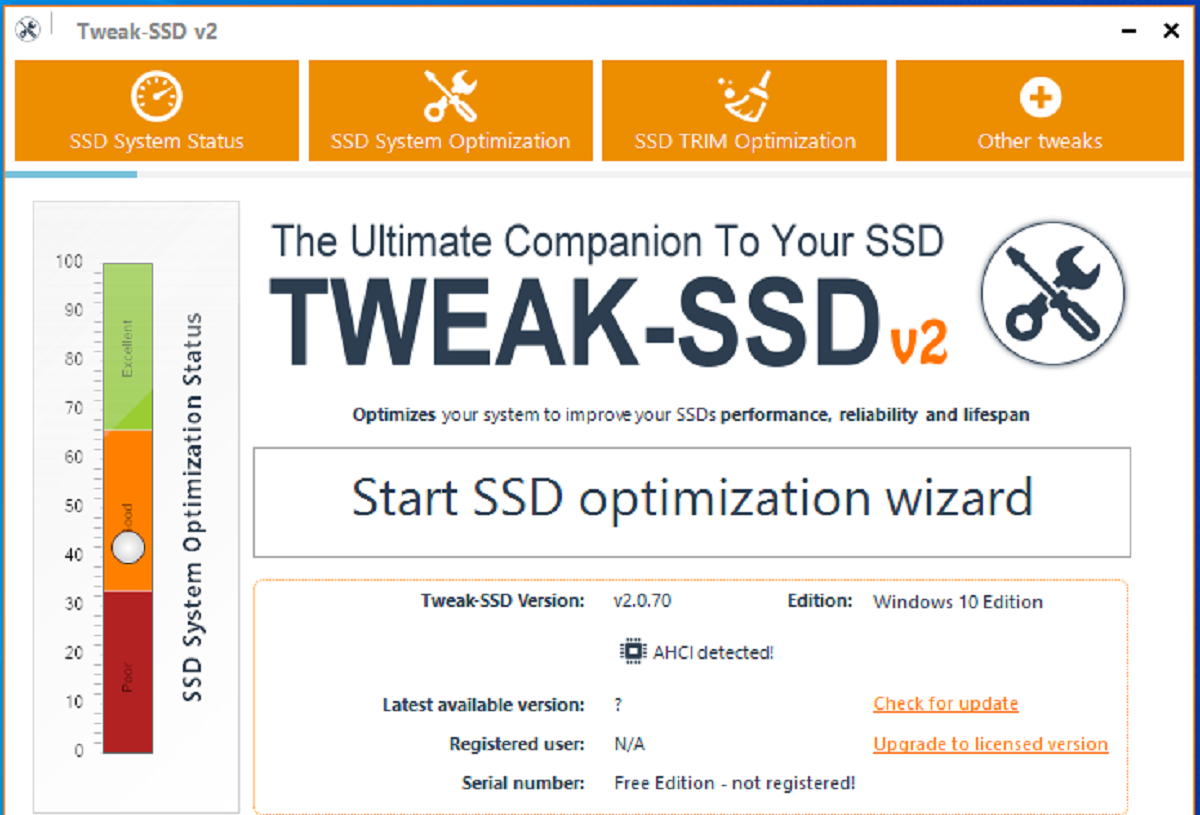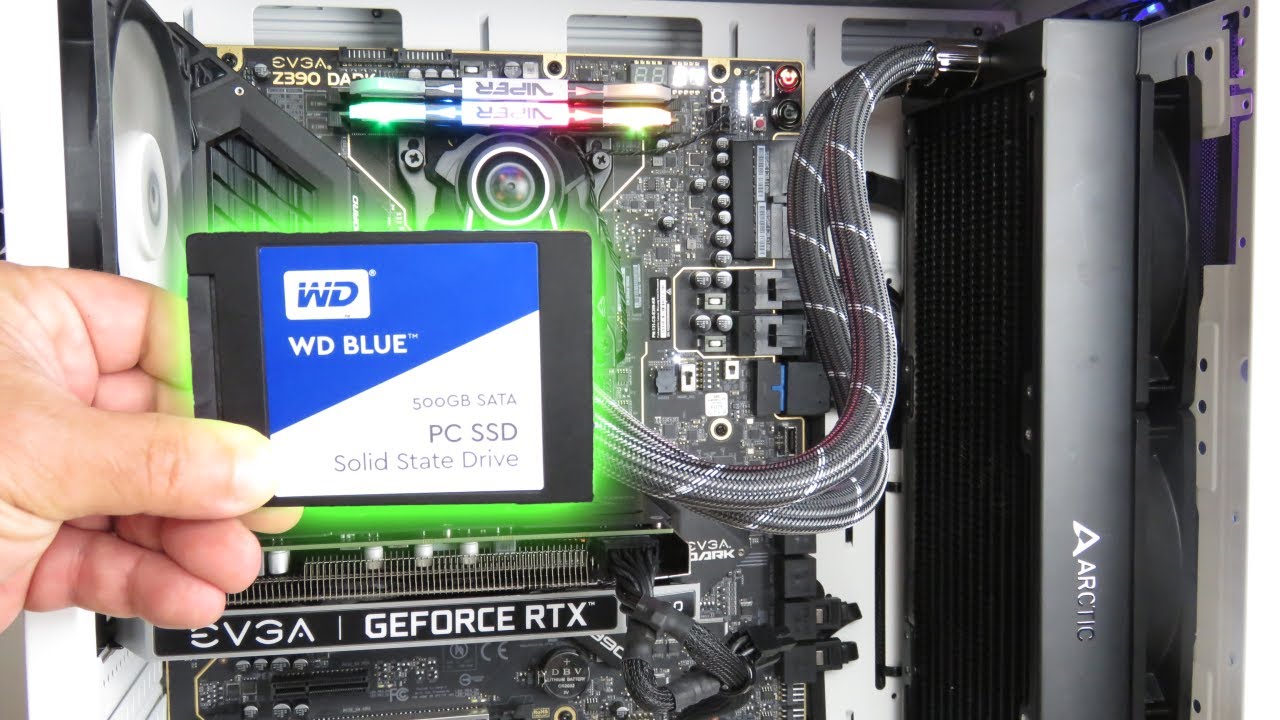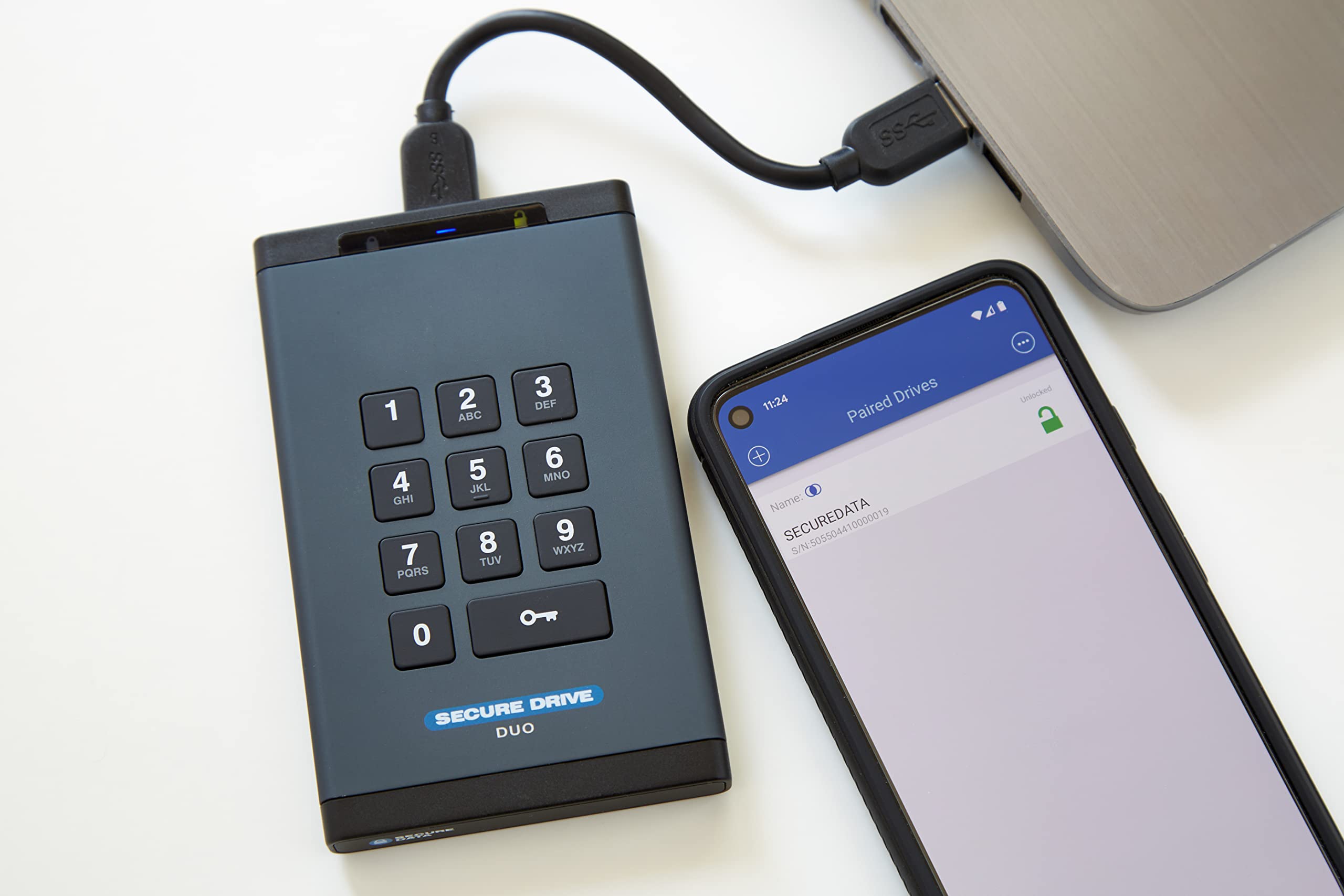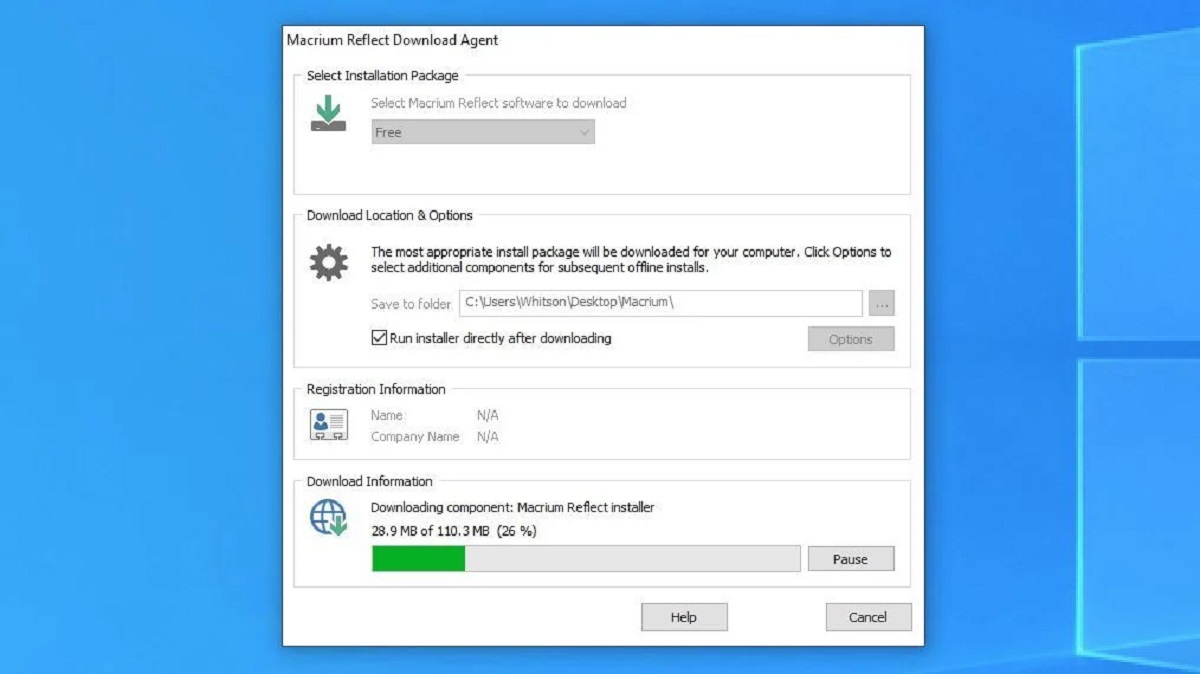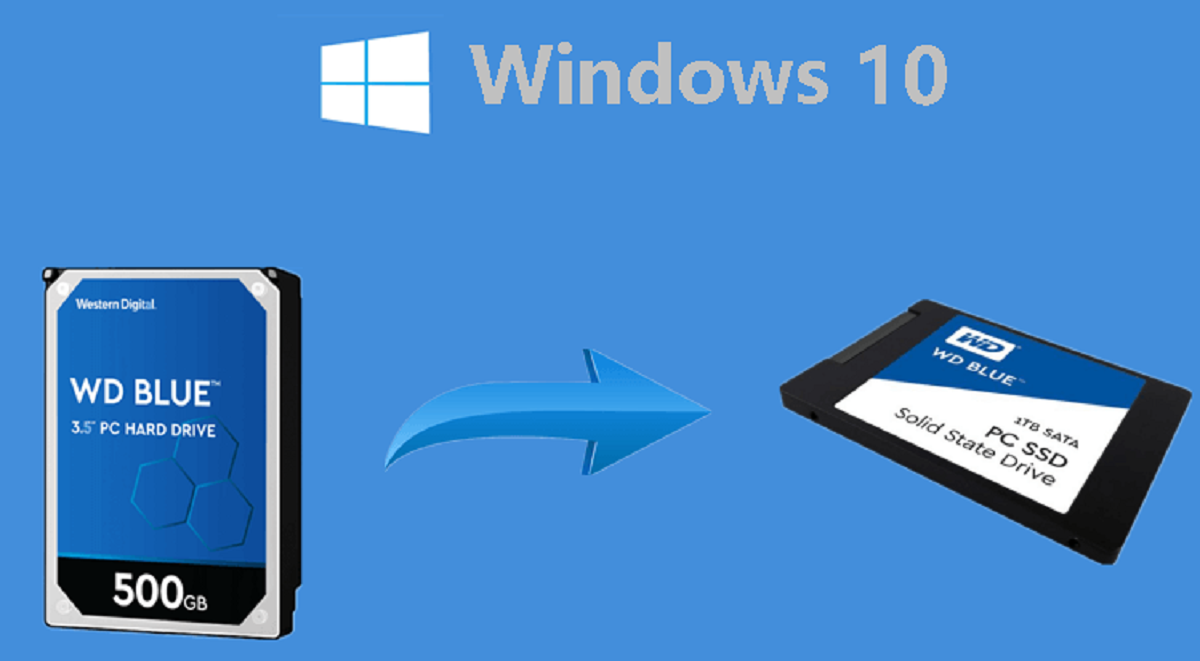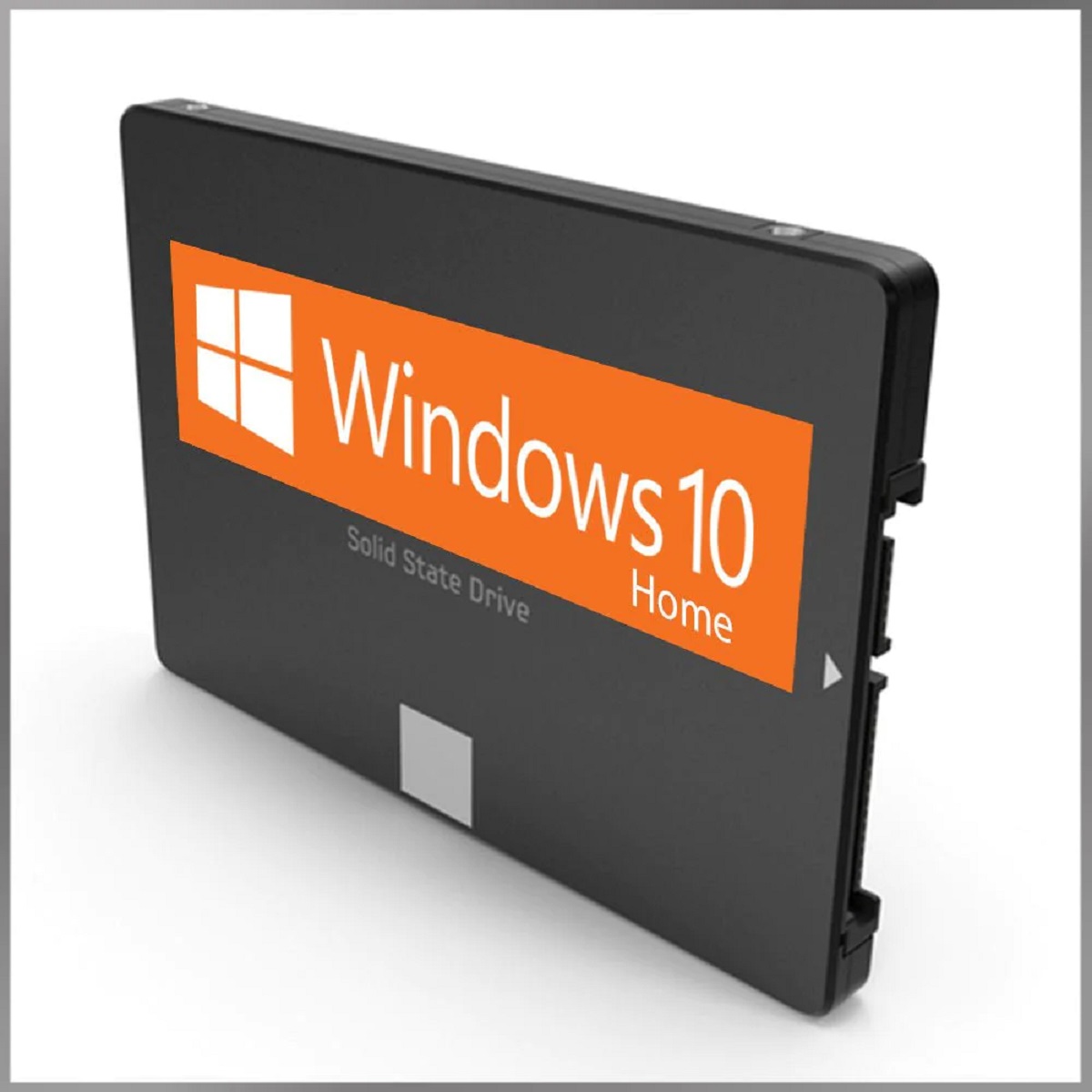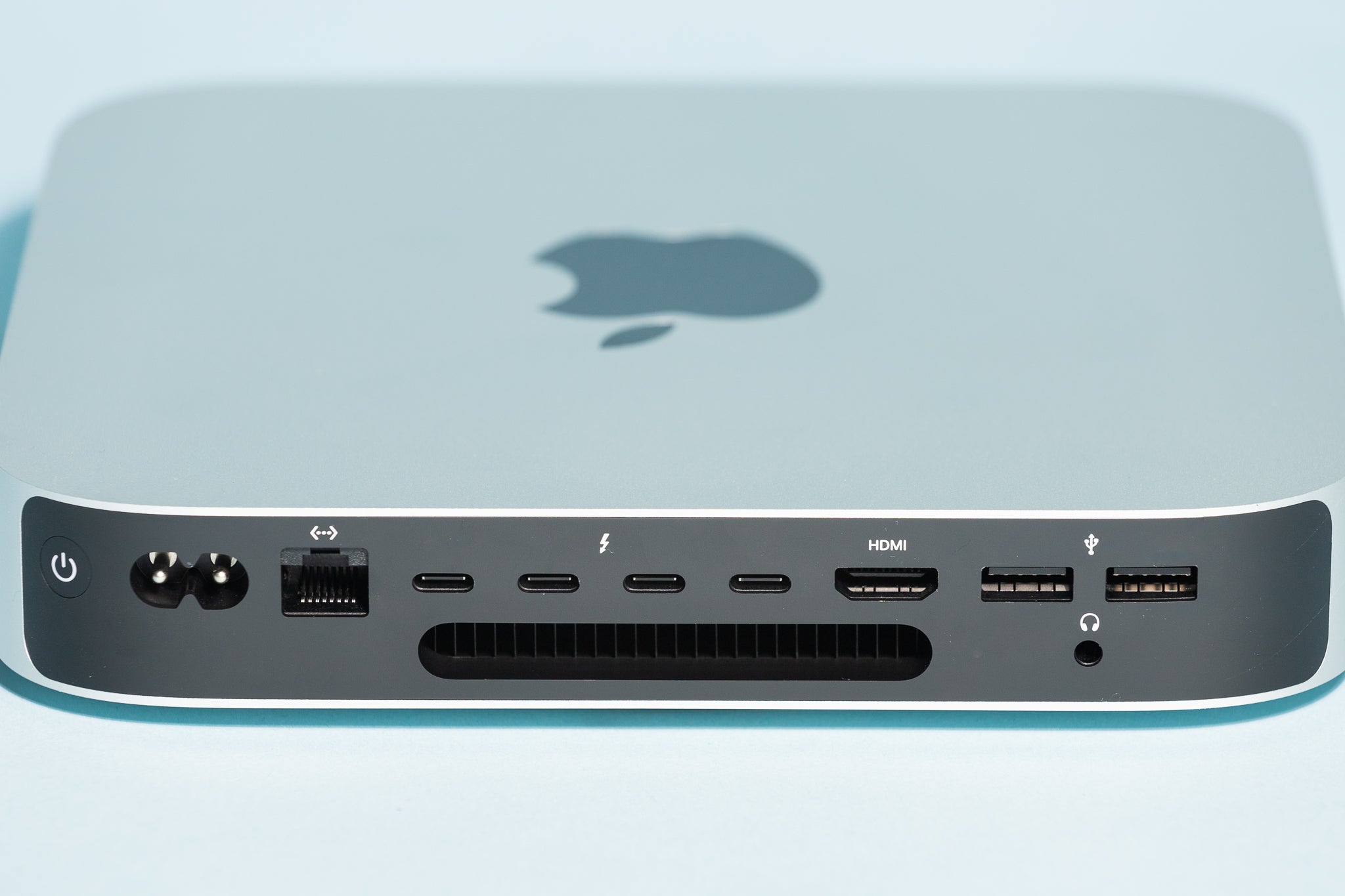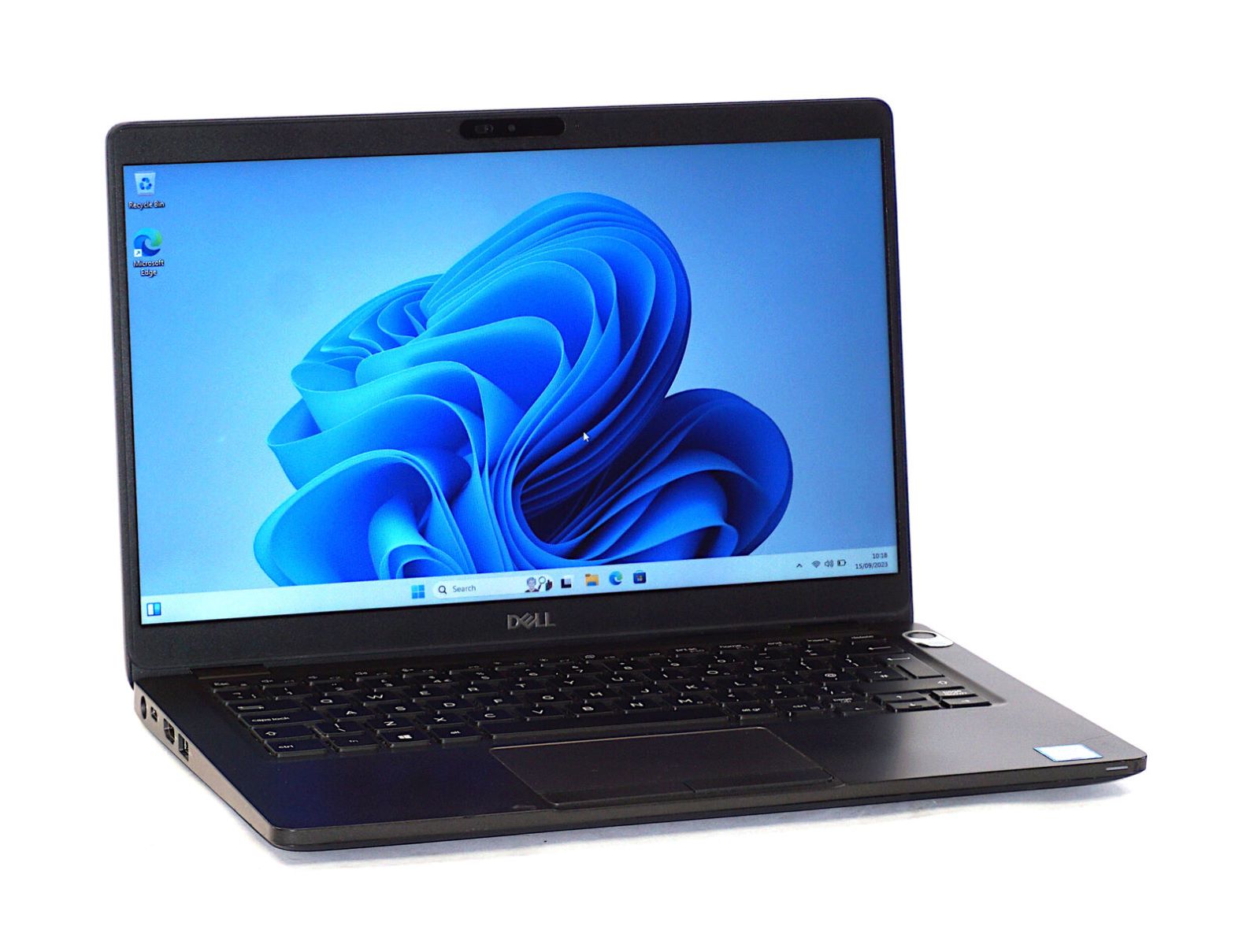Introduction
Unlocking an SSD (Solid State Drive) in Windows 10 can be a crucial step in gaining access to your valuable data. SSDs have become increasingly popular due to their fast read and write speeds, improved reliability, and energy efficiency. However, sometimes you may encounter situations where your SSD gets locked, preventing you from accessing your files and operating system.
When an SSD gets locked, it can occur for various reasons. It could be due to security features such as BitLocker encryption, ATA Security Feature Set, or even a drive lock enabled in the BIOS. Regardless of the cause, it is important to understand how to unlock your SSD to regain access to your data.
In this article, we will explore different methods to unlock an SSD in Windows 10. We will cover both built-in Windows features as well as third-party software tools that can help you unlock your SSD with ease. Whether you are experiencing an SSD lock due to security settings or accidental drive lock, we have the solutions for you.
It is crucial to note that unlocking an SSD requires proper caution and follow-up steps. Always ensure that you have the necessary administrative privileges, backup your important data, and proceed with the unlocking process carefully. With that being said, let’s dive into the various methods you can use to unlock your SSD in Windows 10.
What is SSD?
A Solid State Drive (SSD) is a type of storage device that uses flash memory to store data and provide high-speed access to that data. Unlike traditional hard disk drives (HDDs) that use spinning magnetic disks, SSDs have no moving parts. Instead, they rely on integrated circuits to store and retrieve data, resulting in faster performance and improved reliability.
SSDs offer several advantages over HDDs. One of the main benefits is speed. SSDs have significantly faster read and write speeds, allowing for quick boot times, faster application launches, and snappy file transfers. This speed boost can greatly enhance the overall performance of your computer, resulting in a seamless user experience.
Another advantage of SSDs is their durability. Since they do not have any mechanical components, they are less prone to physical damage caused by drops or vibrations. This makes them ideal for portable devices such as laptops, where durability is essential.
In addition to speed and durability, SSDs are also energy efficient. They consume less power compared to HDDs, resulting in longer battery life for laptops and reduced energy costs for desktop computers. This energy efficiency is achieved by the absence of moving parts and the ability to enter low-power states when not in use.
SSDs also offer improved reliability. Since there are no spinning disks, there is a reduced risk of mechanical failures. This means that your data is less likely to become inaccessible due to mechanical issues, providing added peace of mind.
Overall, SSDs provide a significant upgrade in terms of performance, durability, energy efficiency, and reliability compared to traditional HDDs. Their increasing popularity in the consumer market is a testament to their effectiveness in enhancing computer performance and storage capabilities.
Why does SSD get locked?
There are several reasons why an SSD may get locked, preventing access to your data. Understanding these reasons can help you troubleshoot and resolve the issue effectively. Here are some common causes of SSD lock:
1. Security features: Some SSDs come with built-in security features such as BitLocker encryption or ATA Security Feature Set. These features help protect your data from unauthorized access. However, if you forget your encryption password or the security settings get misconfigured, it can result in the SSD getting locked.
2. Accidental lock: You may accidentally lock your SSD by enabling a drive lock in the BIOS settings. This can happen if you mistakenly change the BIOS settings or if someone else with access to your computer enables the lock without your knowledge.
3. Drive malfunction: In some cases, a malfunction or error in the SSD can cause it to become locked. This can happen due to firmware issues, hardware failures, or compatibility problems with the operating system.
4. Virus or malware: A virus or malware infection on your computer can sometimes lead to your SSD getting locked. These malicious programs can modify or encrypt the SSD’s files, making them inaccessible without the proper decryption key.
It’s important to note that different SSD manufacturers may have additional reasons for SSD lock, and the specific steps to unlock your SSD may vary. It’s recommended to consult the SSD manufacturer’s documentation or support resources for troubleshooting guidance specific to your SSD model.
In the following sections, we will explore various methods to unlock an SSD in Windows 10. These methods will help you unlock your SSD and regain access to your files and operating system.
Unlocking SSD in Windows 10
Unlocking an SSD in Windows 10 may seem like a daunting task, but fear not – there are several methods available to help you regain access to your locked SSD. In this section, we will explore these methods in detail.
It’s important to note that the specific method to unlock your SSD may vary depending on the reason for the lock and the SSD manufacturer. It’s recommended to consult the SSD manufacturer’s documentation or support resources for the most accurate and up-to-date instructions specific to your SSD model.
Here are some common methods to unlock an SSD in Windows 10:
1. Using BitLocker: BitLocker is a built-in encryption feature in Windows 10 that can also be used to unlock a locked SSD. If your SSD is encrypted using BitLocker and you have the password or recovery key, you can use the BitLocker management interface to unlock the SSD and gain access to your data.
2. Using ATA Security Feature Set: Some SSDs come with ATA Security Feature Set support, which allows you to set a password for your SSD. If your SSD has this feature enabled and you know the password, you can use the ATA Secure Erase command or a manufacturer-provided unlocking tool to unlock the SSD.
3. Disabling Drive Lock in BIOS: If you accidentally enabled a drive lock in the BIOS settings, you can access the BIOS setup, locate the drive lock setting, and disable it. This method will vary depending on your computer’s BIOS interface, so refer to your computer’s documentation or manufacturer’s website for specific instructions.
4. Unlocking SSD with Software Tools: There are various third-party software tools available that can help you unlock a locked SSD. These tools often provide additional features and options, such as password recovery, firmware updates, and drive diagnostics. It’s important to use trusted and reputable software tools to ensure the safety and integrity of your data.
By following these methods, you should be able to unlock your SSD and regain access to your valuable data. Remember to proceed with caution and follow the instructions specific to your SSD model. If you are unsure or encounter any issues, it’s always recommended to reach out to the SSD manufacturer’s support for further assistance.
Method 1: Using BitLocker
BitLocker is a built-in encryption feature in Windows 10 that can also be used to unlock a locked SSD. If your SSD is encrypted using BitLocker and you have the necessary password or recovery key, you can easily unlock the SSD using the following steps:
1. Open the BitLocker management interface: Go to the Start menu and search for “BitLocker Drive Encryption.” Click on the search result to open the BitLocker management interface.
2. Locate the locked SSD: In the BitLocker management interface, you will see a list of all the drives connected to your computer. Locate the locked SSD in the list and click on it.
3. Enter the password or recovery key: If your SSD is password-protected, enter the correct password in the provided field. If you don’t remember the password, you can use the recovery key to unlock the SSD. Click on the “Unlock” button.
4. Wait for the unlocking process: BitLocker will initiate the unlocking process for the SSD. This may take some time, depending on the size of the SSD and the amount of data stored on it. Be patient and allow the process to complete.
5. Access your unlocked SSD: Once the unlocking process is complete, you will be able to access your unlocked SSD and the data stored on it. You can now use the SSD as you normally would.
It is important to note that the availability of the BitLocker feature may vary depending on the edition of Windows 10 you are using. BitLocker is available in Windows 10 Pro, Enterprise, and Education editions. If you are using Windows 10 Home edition, you may need to consider alternative methods or upgrade to a higher edition to utilize BitLocker.
By using BitLocker, you can effectively unlock and access your locked SSD, provided you have the correct password or recovery key. This method provides a secure and reliable way to regain access to your data and ensure the integrity of your SSD.
Method 2: Using ATA Security Feature Set
If your SSD has the ATA Security Feature Set enabled, you can use this feature to set a password and unlock the locked SSD. The following steps outline the process of unlocking an SSD using the ATA Security Feature Set:
1. Determine the ATA Secure Erase command: Check the documentation or support resources provided by your SSD manufacturer to determine the ATA Secure Erase command specific to your SSD model. This command will be used to unlock the SSD.
2. Access the BIOS setup: Restart your computer and access the BIOS setup by pressing the designated key during boot-up. The key to enter the BIOS setup may vary depending on your computer’s manufacturer (common keys are F2, Del, or F10).
3. Locate the ATA Security Feature Set: In the BIOS setup, navigate to the “Security” or “Drives” section. Look for an option related to the ATA Security Feature Set. The option may be named differently depending on your BIOS interface.
4. Unlock the SSD: Select the option to unlock the SSD and enter the password associated with the ATA Security Feature Set. If you don’t remember the password, you may need to perform a reset or contact your SSD manufacturer for further assistance.
5. Save and exit BIOS: After successfully unlocking the SSD, save the changes in the BIOS setup and exit. Your computer will proceed with the boot process, and you should now be able to access the unlocked SSD.
It is important to note that the availability and implementation of the ATA Security Feature Set may vary depending on the SSD manufacturer and model. Some SSDs may provide manufacturer-specific unlocking tools or utilities to assist in the process. Refer to your SSD manufacturer’s documentation or support resources for more specific instructions on unlocking your SSD using the ATA Security Feature Set.
By utilizing the ATA Security Feature Set, you can unlock your SSD with the correct password and regain access to your data. This method provides an additional layer of security and control over your SSD, ensuring the protection of your information.
Method 3: Disabling Drive Lock in BIOS
If you accidentally enabled a drive lock in the BIOS settings, you can unlock your SSD by disabling the drive lock. Here are the steps to disable drive lock in the BIOS:
1. Restart your computer: Start by restarting your computer and press the designated key to enter the BIOS setup. The key to access the BIOS setup may vary depending on your computer’s manufacturer.
2. Navigate to the “Security” or “Drives” section: In the BIOS setup, look for a section that is related to “Security” or “Drives”. The exact name might differ depending on your computer’s BIOS interface.
3. Find the drive lock option: Within the “Security” or “Drives” section, locate an option that refers to drive lock. It may be named “DriveLock,” “Hard Drive Password,” or something similar. Select this option.
4. Disable the drive lock: Once you have selected the drive lock option, choose the option to disable or turn off drive lock. The exact method of disabling drive lock may vary depending on your BIOS interface. Confirm the changes and exit the BIOS setup.
5. Save and exit: Save the changes in the BIOS setup and exit. Your computer will proceed with the boot process, and the drive lock on your SSD should now be disabled.
It is important to note that the steps to disable drive lock in the BIOS may vary depending on your computer’s manufacturer and BIOS interface. Refer to the documentation or support resources provided by your computer manufacturer for specific instructions.
By successfully disabling the drive lock in the BIOS setup, you can regain access to your locked SSD. Ensure that you properly save and exit the BIOS after making the changes. It’s always advisable to double-check your computer’s documentation or contact customer support for assistance if you are unsure about the BIOS settings.
Method 4: Unlocking SSD with Software Tools
If other methods have not been successful in unlocking your SSD, you can turn to third-party software tools specifically designed to unlock SSDs. These tools offer additional features and options that can assist in unlocking a locked SSD. Here is a general overview of the process:
1. Research and choose a trusted software tool: Look for reputable software tools that provide SSD unlocking capabilities. Conduct thorough research and read reviews to ensure the tool is reliable, safe, and compatible with your SSD model.
2. Download and install the software tool: Visit the official website of the software tool and download the appropriate version for your operating system. Once downloaded, run the installer and follow the on-screen instructions to install the software on your computer.
3. Launch the software tool: Open the software tool after installation and familiarize yourself with the user interface and available features. Some software tools may require administrative privileges to access the locked SSD, so make sure to run the program as an administrator.
4. Follow the instructions provided: Each software tool may have different steps for unlocking an SSD. carefully follow the instructions provided by the software tool, ensuring that you understand each step before proceeding.
5. Unlock the SSD: Once you have followed the instructions and provided any necessary information or credentials, the software tool will attempt to unlock the SSD. Allow the tool to complete the process, which may take some time depending on the complexity of the lock.
6. Verify the unlocking: After the software tool completes the unlocking process, verify that your SSD is now accessible. You can check by attempting to access the SSD or by running disk management tools to detect the unlocked SSD.
It’s important to note that the specific steps and features of each software tool will vary. Some software tools may offer additional functionality such as password recovery, firmware updates, and drive diagnostics. It’s advisable to carefully read the documentation or user guide provided by the software tool to ensure proper usage.
When using third-party software tools, always exercise caution and verify the legitimacy and trustworthiness of the tool before downloading or installing it. Stick to well-known and reputable software providers to minimize the risk of introducing malware or compromising your data.
By utilizing trusted software tools, you can potentially unlock your SSD and regain access to your data. However, keep in mind that these tools should be used with care and in accordance with the instructions provided by the software developers.
Conclusion
Unlocking a locked SSD in Windows 10 can be a challenging process, but with the right methods and techniques, you can regain access to your valuable data. We have explored four different methods to unlock an SSD: using BitLocker, utilizing the ATA Security Feature Set, disabling drive lock in the BIOS, and employing third-party software tools.
By utilizing built-in features like BitLocker, you can unlock your SSD with ease, provided you have the necessary password or recovery key. The ATA Security Feature Set offers another avenue for unlocking your SSD, allowing you to set a password and regain access. Additionally, disabling drive lock in the BIOS can be a viable solution if you accidentally enabled it.
If these methods do not work, you can turn to trusted third-party software tools designed specifically for unlocking locked SSDs. These tools offer additional features and options that can assist in unlocking your SSD and getting your data back.
When attempting to unlock your SSD, it is crucial to proceed with caution and follow the instructions specific to your SSD model. Always ensure that you have the necessary administrative privileges and perform backups of your important data before proceeding with any unlocking method.
Remember to consult your SSD manufacturer’s documentation or support resources for the most accurate and up-to-date instructions specific to your SSD model. They can provide valuable guidance and troubleshooting steps if you encounter any issues during the unlocking process.
By following the appropriate methods and utilizing the resources available to you, you can successfully unlock your SSD in Windows 10 and regain access to your data. Whether it’s through built-in Windows features, BIOS settings, or third-party software tools, unlocking your SSD is an achievable task with the right knowledge and diligence.







